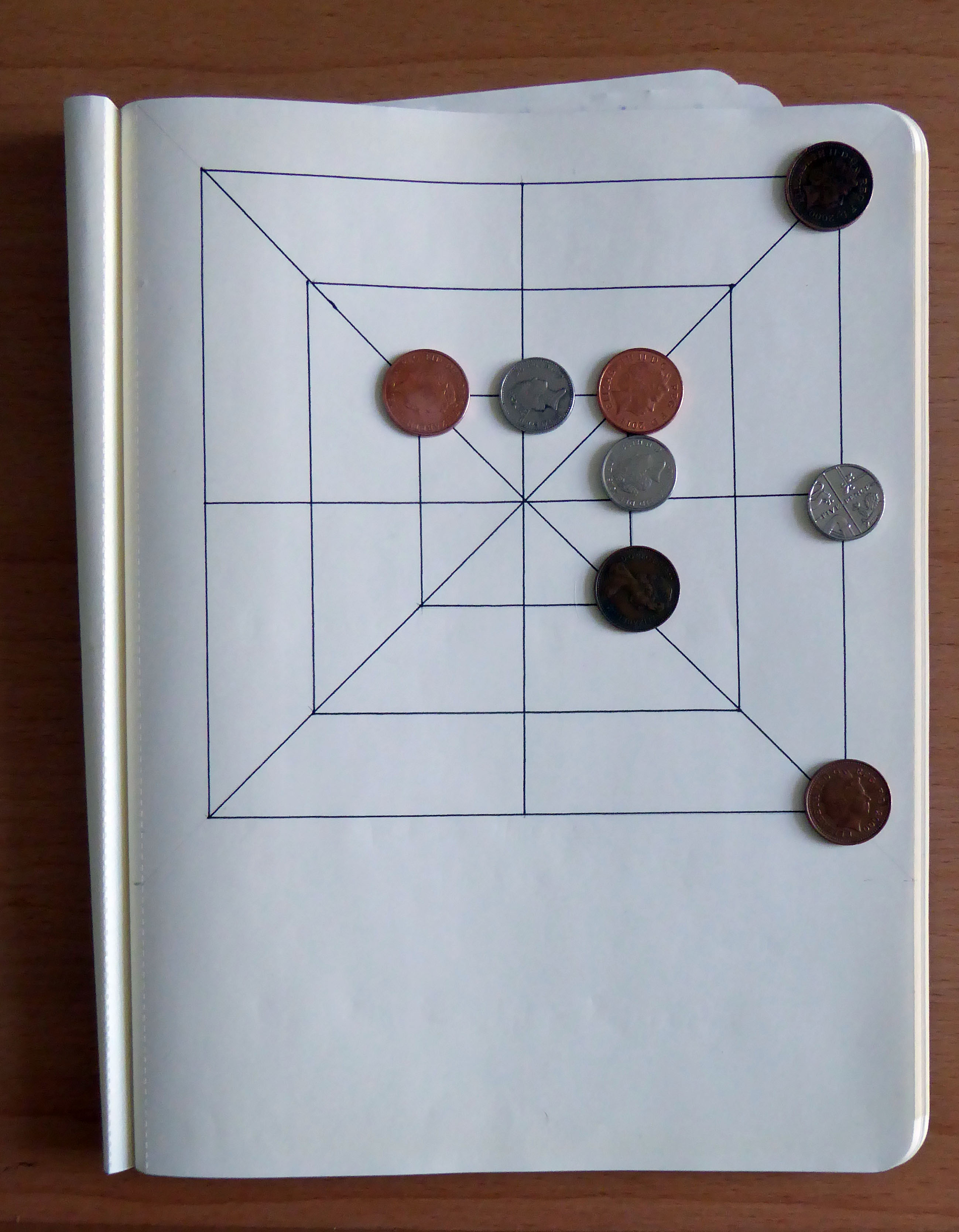Square Dance
Write about a popular card, dice or board game in your world and how it is played.
The game of Square Dance is popular across Marivar both inside the Empire and out, for it is both simple and challenging and needs no elaborate equipment, though some sets are crafted from the finest and most expensive materials. A number of variations of it exist but the basics remain as they have been for many years. The mechanics of the game are well suited to wagers and gambling for one can wager on the result but also play for "keeps" with the counters - when playing with pebbles this is purely for honour but coins can add a range of interests and the elite have been known to play with jewels or even the deeds of estates.
Played on a simple layout of three concentric squares with radial lines each player begins with 8 pieces. With the players taking alternate turns, the objective is to make straight lines of 3 counters (a row) at which point one of the opponents counters can be removed from the board. In the first phase of the game the players distribute their counters across the board; when all counters have been distributed each turn is moving a piece to another position following the lines on the board and only able to move through vacant intersections. In the standard form of the game a piece may not be moved to a spot that the player had vacated with their previous move.
The first player has an advantage in the game; longer matches run over multiple games and the usual approach in competition is a minimum of 6 games with the winner being the first to be leading by a clear margin once an even number have been completed (say 4-2, or 5-3). Between evenly matched players this can result in long games. Sometimes very long games.
History
The game has been known to have been played from the earliest of days in Marivar - it is referred to in the sagas that predate the Empire and boards are known inscribed on shields held to be from the period of Abran. How it developed is unclear for what typically remains is the board and this is rarely changed by the known variations - although the centre variation involves an extra position the lines are normally drawn to the centre as this is the easiest way to scratch out a reasonable accurate and concentric board - lines first and then squares.
Execution
A number of variations to the game exist, a few of which are detailed here but this makes no attempt to be exhaustive but rather to give an impression of the variations that you might encounter and emphasise the need to be clear at the start of a game exactly which variation is being played.
The Polite Variation
on a row being made the player loosing a piece gets to choose which piece is removed
The Flying Variation
a piece can be moved to any vacant intersection even if there is no unobstructed route.
The Reciprocating Variation
The rule against a piece returning to a spot it has just been moved from is ignored.
The Centre Variation
The centre of the board may be occupied by a counter during the movement phase but if occupied it must be vacated in the next move.
Additional to this a number of variations exist to accommodate play between players of different standards to make matches more even or wagers more "interesting". These may include an additional piece or two for the weaker player, time limitations or some other means agreed upon by the players.
Components and tools
The game can be played using anything that serves as two sets of eight counters - dark and light pebbles, dried peas and beans or specialised counters and some form of playing surface. This is known as the board but it may be lines scratched in the sand, or on a flat stone or any other surface. Many people carry small sets that unfold to the size of the palm of your hand but two people wanting to play a game would be almost unable to fail to find the makings of an improvised in a few minutes.
A fine game to while away an hour or two if you keep the stakes small.
An improvised game nears completion with copper to move. Inner NW to Mid SE to remove one silver and leave that player unable to make a line of 3.
Photo by Ed Andrew




Comments